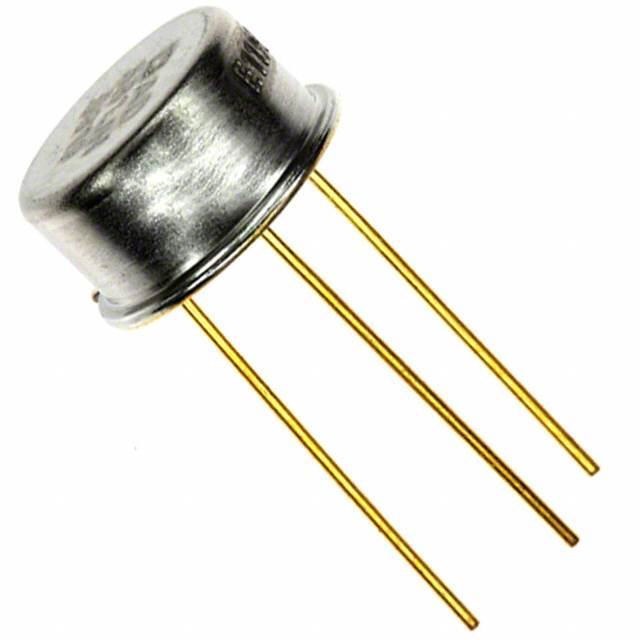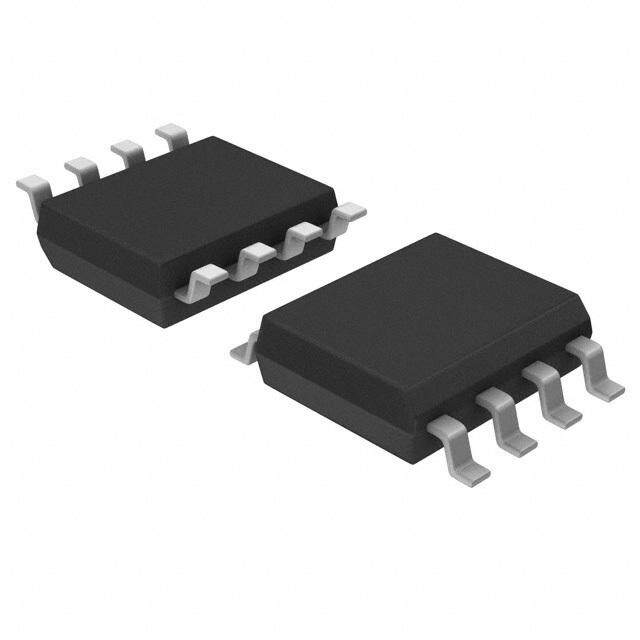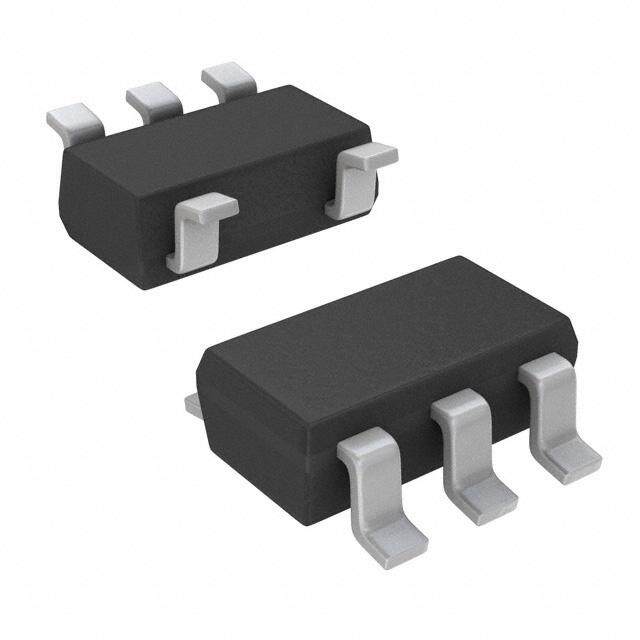ICGOO在线商城 > 集成电路(IC) > PMIC - 电压基准 > ADR127AUJZ-REEL7
- 型号: ADR127AUJZ-REEL7
- 制造商: Analog
- 库位|库存: xxxx|xxxx
- 要求:
| 数量阶梯 | 香港交货 | 国内含税 |
| +xxxx | $xxxx | ¥xxxx |
查看当月历史价格
查看今年历史价格
ADR127AUJZ-REEL7产品简介:
ICGOO电子元器件商城为您提供ADR127AUJZ-REEL7由Analog设计生产,在icgoo商城现货销售,并且可以通过原厂、代理商等渠道进行代购。 ADR127AUJZ-REEL7价格参考¥2.13-¥2.13。AnalogADR127AUJZ-REEL7封装/规格:PMIC - 电压基准, Series Voltage Reference IC ±0.24% 5mA TSOT-6。您可以下载ADR127AUJZ-REEL7参考资料、Datasheet数据手册功能说明书,资料中有ADR127AUJZ-REEL7 详细功能的应用电路图电压和使用方法及教程。
| 参数 | 数值 |
| 产品目录 | 集成电路 (IC)半导体 |
| 描述 | IC VREF SERIES PREC 1.25V TSOT-6参考电压 Prec Micropwr LDO 1.25 VOUT |
| 产品分类 | |
| 品牌 | Analog Devices Inc |
| 产品手册 | |
| 产品图片 |
|
| rohs | 符合RoHS无铅 / 符合限制有害物质指令(RoHS)规范要求 |
| 产品系列 | 电源管理 IC,参考电压,Analog Devices ADR127AUJZ-REEL7- |
| 数据手册 | |
| 产品型号 | ADR127AUJZ-REEL7 |
| 产品目录页面 | |
| 产品种类 | 参考电压 |
| 供应商器件封装 | TSOT-6 |
| 其它名称 | ADR127AUJZ-REEL7TR |
| 分流电流—最大值 | 5 mA |
| 初始准确度 | +/- 1.5 mV |
| 包装 | 剪切带 (CT) |
| 参考类型 | Series Precision References |
| 商标 | Analog Devices |
| 安装类型 | 表面贴装 |
| 安装风格 | SMD/SMT |
| 容差 | ±0.24% |
| 封装 | Reel |
| 封装/外壳 | SOT-23-6 细型,TSOT-23-6 |
| 封装/箱体 | TSOT-6 |
| 工作温度 | -40°C ~ 125°C |
| 工厂包装数量 | 3000 |
| 平均温度系数—典型值 | 3 PPM / C |
| 最大工作温度 | + 125 C |
| 最小工作温度 | - 40 C |
| 标准包装 | 3,000 |
| 温度系数 | 25ppm/°C |
| 电压-输入 | 2.7 V ~ 18 V |
| 电压-输出 | 1.25V |
| 电流-输出 | 5mA |
| 电流-阴极 | - |
| 电流-静态 | 95µA |
| 电源电流 | 125 uA |
| 系列 | ADR127 |
| 设计资源 | |
| 输入电压 | 2.7 V to 18 V |
| 输出电压 | 1.25 V |
| 通道数 | 1 |

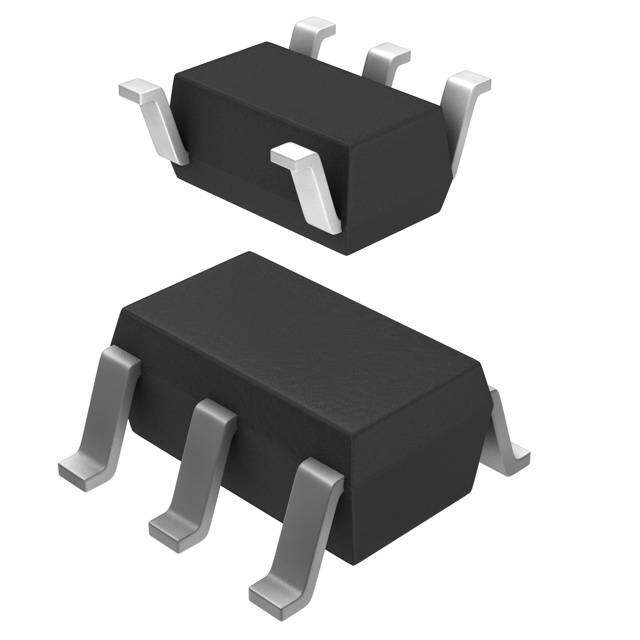
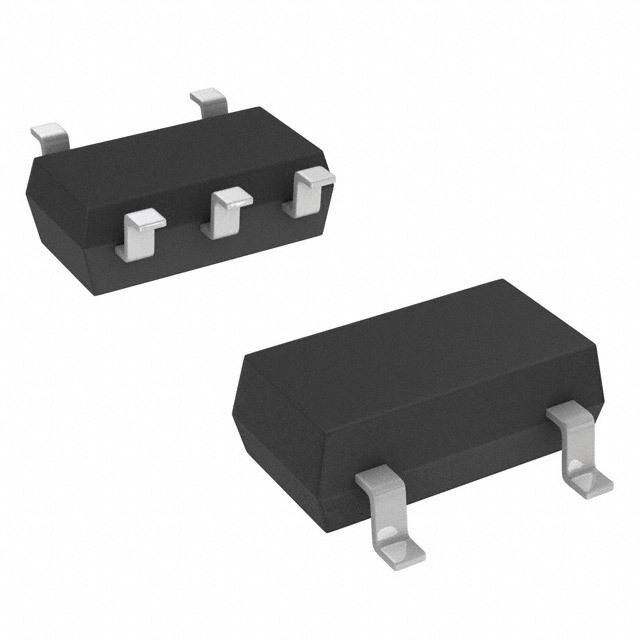
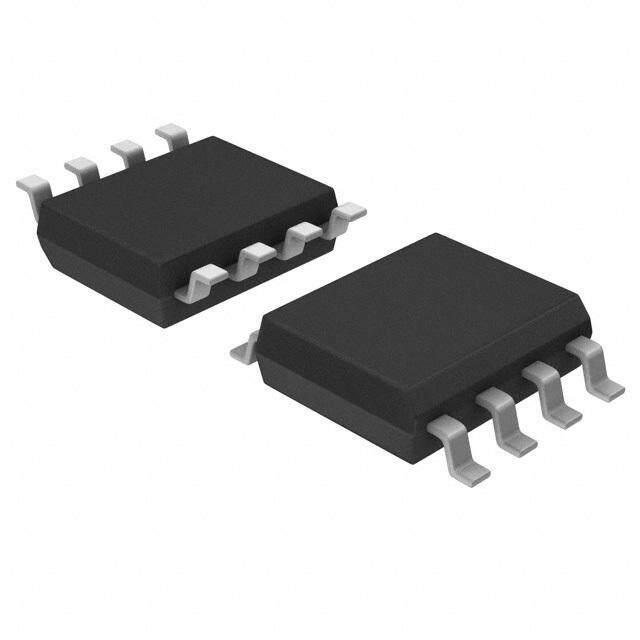
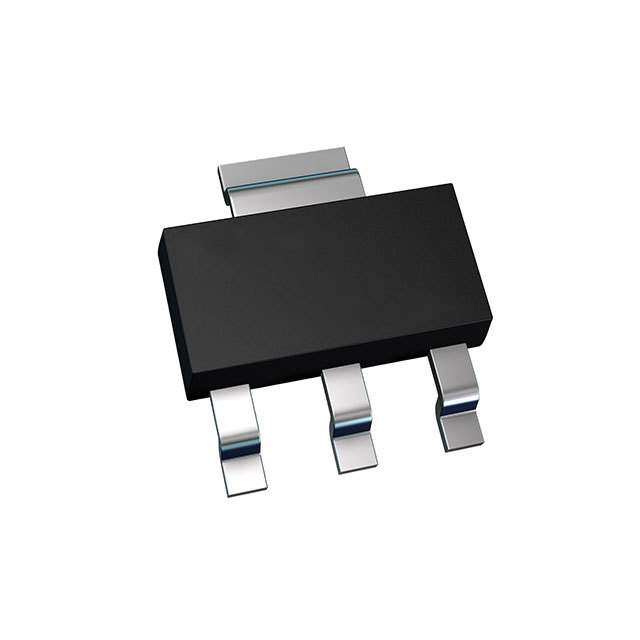
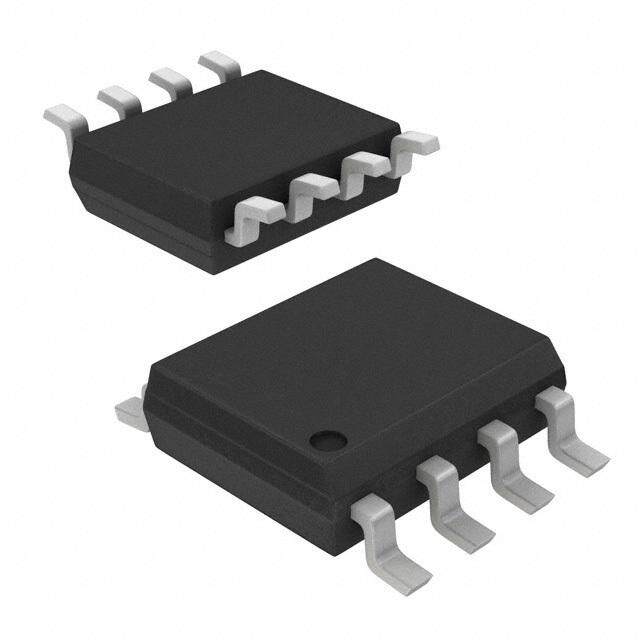
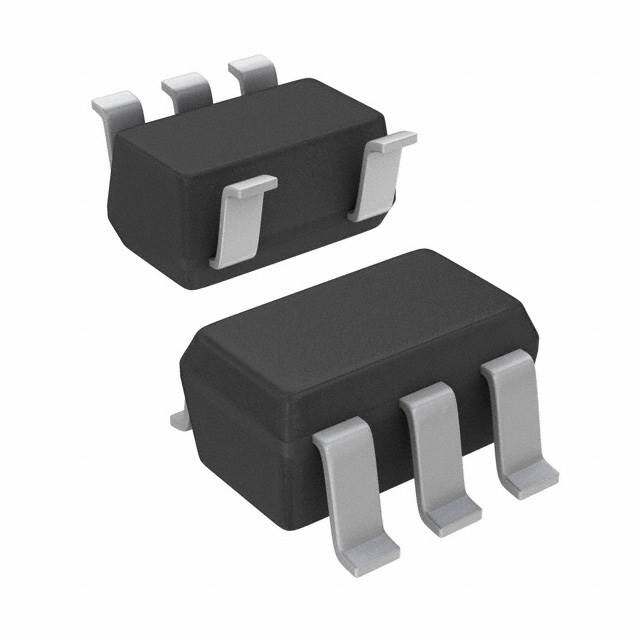


- 商务部:美国ITC正式对集成电路等产品启动337调查
- 曝三星4nm工艺存在良率问题 高通将骁龙8 Gen1或转产台积电
- 太阳诱电将投资9.5亿元在常州建新厂生产MLCC 预计2023年完工
- 英特尔发布欧洲新工厂建设计划 深化IDM 2.0 战略
- 台积电先进制程称霸业界 有大客户加持明年业绩稳了
- 达到5530亿美元!SIA预计今年全球半导体销售额将创下新高
- 英特尔拟将自动驾驶子公司Mobileye上市 估值或超500亿美元
- 三星加码芯片和SET,合并消费电子和移动部门,撤换高东真等 CEO
- 三星电子宣布重大人事变动 还合并消费电子和移动部门
- 海关总署:前11个月进口集成电路产品价值2.52万亿元 增长14.8%
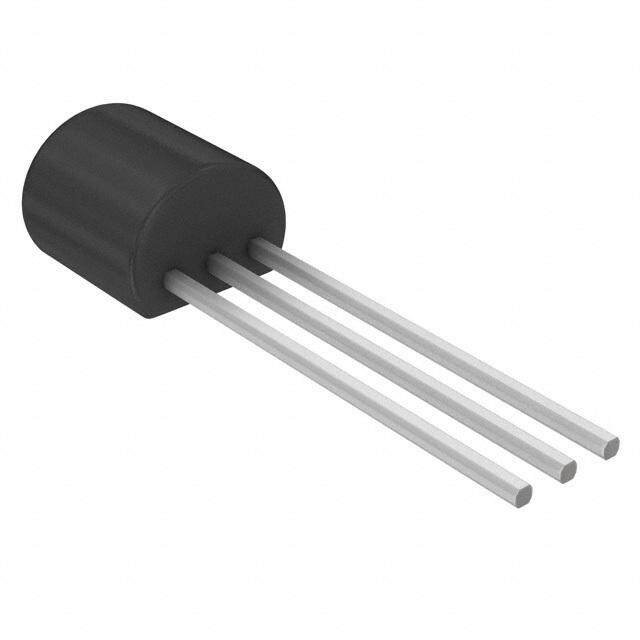


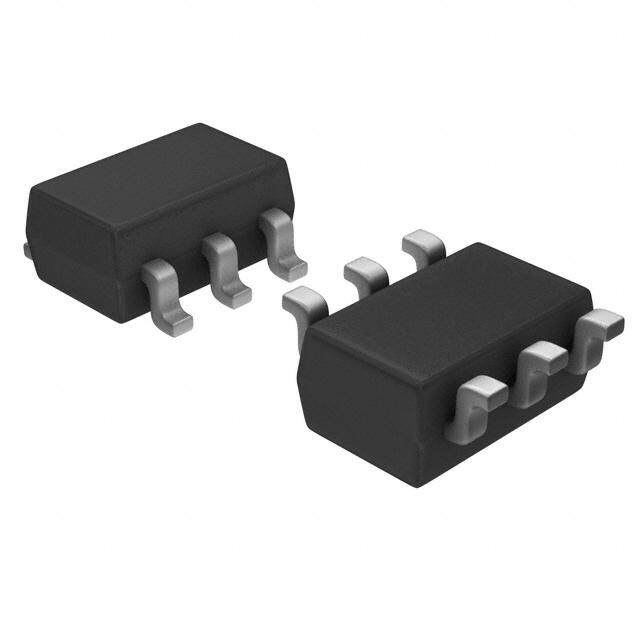


PDF Datasheet 数据手册内容提取
Precision, Micropower LDO Voltage References in TSOT ADR121/ADR125/ADR127 FEATURES PIN CONFIGURATION Initial accuracy NC1 1 6 NC1 A grade: ±0.24% ADR12x B grade: ±0.12% GND 2 TOP VIEW 5 NC1 (Not to Scale) Maximum temperature coefficient VIN 3 4 VOUT A grade: 25 ppm/°C LoBw gdrraodpeo: u9t p: 3p0m0/ m°CV for ADR121/ADR125 1MUNSCT =B EN OL ECFOTN FNLEOCATTING 05725-001 Figure 1. High output current: +5 mA/−2 mA Low typical operating current: 85 μA Input range: 2.7 V to 18 V for ADR127 Temperature range: −40°C to +125°C Tiny TSOT (UJ-6) package APPLICATIONS Battery-powered instrumentation Portable medical equipment Data acquisition systems Automotive GENERAL DESCRIPTION The ADR121/ADR125/ADR127 are a family of micropower, The ADR12x is a low dropout voltage reference, requiring only high precision, series mode, band gap references with sink and 300 mV for the ADR121/ADR125 and 1.45 V for the ADR127 source capability. The parts feature high accuracy and low above the nominal output voltage on the input to provide a power consumption in a tiny package. The ADR12x design stable output voltage. This low dropout performance, coupled includes a patented temperature-drift curvature correction with the low 85 μA operating current, makes the ADR12x ideal technique that minimizes the nonlinearities in the output for battery-powered applications. voltage vs. temperature characteristics. Available in an extended industrial temperature range of −40°C to +125°C, the ADR121/ADR125/ADR127 are housed in the tiny TSOT (UJ-6) package. Rev. B Information furnished by Analog Devices is believed to be accurate and reliable. However, no responsibility is assumed by Analog Devices for its use, nor for any infringements of patents or other One Technology Way, P.O. Box 9106, Norwood, MA 02062-9106, U.S.A. rights of third parties that may result from its use. Specifications subject to change without notice. No license is granted by implication or otherwise under any patent or patent rights of Analog Devices. Tel: 781.329.4700 www.analog.com Trademarks and registered trademarks are the property of their respective owners. Fax: 781.461.3113 ©2006–2008 Analog Devices, Inc. All rights reserved.
ADR121/ADR125/ADR127 TABLE OF CONTENTS Features .............................................................................................. 1 Terminology .................................................................................... 15 Applications ....................................................................................... 1 Theory of Operation ...................................................................... 16 Pin Configuration ............................................................................. 1 Power Dissipation Considerations ........................................... 16 General Description ......................................................................... 1 Input Capacitor ........................................................................... 16 Revision History ............................................................................... 2 Output Capacitor ........................................................................ 16 Specifications ..................................................................................... 3 Applications Information .............................................................. 17 ADR121 Electrical Characteristics ............................................. 3 Basic Voltage Reference Connection ....................................... 17 ADR125 Electrical Characteristics ............................................. 4 Stacking Reference ICs for Arbitrary Outputs ....................... 17 ADR127 Electrical Characteristics ............................................. 5 Negative Precision Reference Without Precision Resistors .. 17 Absolute Maximum Ratings ............................................................ 6 General-Purpose Current Source ............................................ 17 Thermal Resistance ...................................................................... 6 Outline Dimensions ....................................................................... 18 ESD Caution .................................................................................. 6 Ordering Guide .......................................................................... 18 Typical Performance Characteristics ............................................. 7 REVISION HISTORY 1/08—Rev. A to Rev. B Changes to Table 1 ............................................................................ 3 Changes to Table 2 ............................................................................ 4 Changes to Table 3 .............................................................................5 Changes to Figure 52 ...................................................................... 17 Changes to Ordering Guide ......................................................... 18 5/07—Rev. 0 to Rev. A Changes to Table 1 ............................................................................ 3 Changes to Table 2 ............................................................................ 4 Changes to Table 3 ............................................................................ 5 Added Thermal Hysteresis Equation ............................................. 7 Changes to Ordering Guide .......................................................... 18 6/06—Revision 0: Initial Version Rev. B | Page 2 of 20
ADR121/ADR125/ADR127 SPECIFICATIONS ADR121 ELECTRICAL CHARACTERISTICS T = 25°C, V = 2.8 V to 18 V, I = 0 mA, unless otherwise noted. A IN OUT Table 1. Parameter Symbol Conditions/Comments Min Typ Max Unit OUTPUT VOLTAGE V OUT B Grade 2.497 2.5 2.503 V A Grade 2.494 2.5 2.506 V INITIAL ACCURACY ERROR V OERR B Grade −0.12 +0.12 % A Grade −0.24 +0.24 % TEMPERATURE COEFFICIENT TCV −40°C < T < +125°C OUT A B Grade 3 9 ppm/°C A Grade 15 25 ppm/°C DROPOUT (V − V ) V I = 0 mA 300 mV OUT IN DO OUT LOAD REGULATION −40°C < T < +125°C; V = 5.0 V, 80 300 ppm/mA A IN 0 mA < I < 5 mA OUT −40°C < T < +125°C; V = 5.0 V, 50 300 ppm/mA A IN −2 mA < I < 0 mA OUT LINE REGULATION 2.8 V to 18 V, I = 0 mA −50 +3 +50 ppm/V OUT PSRR f = 60 Hz −90 dB QUIESCENT CURRENT I −40°C < T < +125°C, no load Q A V = 18 V 95 125 μA IN V = 2.8 V 80 95 μA IN SHORT-CIRCUIT CURRENT TO GROUND V = 2.8 V 18 mA IN V = 18 V 40 mA IN VOLTAGE NOISE f = 10 kHz 500 nV/√Hz f = 0.1 Hz to 10 Hz 18 μV p-p TURN-ON SETTLING TIME To 0.1%, C = 0.2 μF 100 μs L LONG-TERM STABILITY 1000 hours @ 25°C 150 ppm/1000 hrs OUTPUT VOLTAGE HYSTERESIS See the Terminology section 300 ppm Rev. B | Page 3 of 20
ADR121/ADR125/ADR127 ADR125 ELECTRICAL CHARACTERISTICS T = 25°C, V = 5.3 V to 18 V, I = 0 mA, unless otherwise noted. A IN OUT Table 2. Parameter Symbol Conditions/Comments Min Typ Max Unit OUTPUT VOLTAGE V OUT B Grade 4.994 5.0 5.006 V A Grade 4.988 5.0 5.012 V INITIAL ACCURACY ERROR V OERR B Grade −0.12 +0.12 % A Grade −0.24 +0.24 % TEMPERATURE COEFFICIENT TCV −40°C < T < +125°C OUT A B Grade 3 9 ppm/°C A Grade 15 25 ppm/°C DROPOUT (V − V ) V I = 5 mA 300 mV OUT IN DO OUT LOAD REGULATION −40°C < T < +125°C; V = 6.0 V, 35 200 ppm/mA A IN 0 mA < I < 5 mA OUT −40°C < T < +125°C; V = 6.0 V, 35 200 ppm/mA A IN −2 mA < I < 0 mA OUT LINE REGULATION 5.3 V to 18 V, I = 0 mA 30 ppm/V OUT PSRR f = 60 Hz −90 dB QUIESCENT CURRENT I −40°C < T < +125°C, no load Q A V = 18 V 95 125 μA IN V = 5.3 V 80 95 μA IN SHORT-CIRCUIT CURRENT TO GROUND V = 5.3 V 25 mA IN V = 18 V 40 mA IN VOLTAGE NOISE f = 10 kHz 900 nV/√Hz f = 0.1 Hz to 10 Hz 36 μV p-p TURN-ON SETTLING TIME To 0.1%, C = 0.2 μF 100 μs L LONG-TERM STABILITY 1000 hours @ 25°C 150 ppm/1000 hrs OUTPUT VOLTAGE HYSTERESIS See the Terminology section 300 ppm Rev. B | Page 4 of 20
ADR121/ADR125/ADR127 ADR127 ELECTRICAL CHARACTERISTICS T = 25°C, V = 2.7 V to 18 V, I = 0 mA, unless otherwise noted. A IN OUT Table 3. Parameter Symbol Conditions/Comments Min Typ Max Unit OUTPUT VOLTAGE V OUT B Grade 1.2485 1.25 1.2515 V A Grade 1.2470 1.25 1.2530 V INITIAL ACCURACY ERROR V OERR B Grade −0.12 +0.12 % A Grade −0.24 +0.24 % TEMPERATURE COEFFICIENT TCV −40°C < T < +125°C OUT A B Grade 3 9 ppm/°C A Grade 15 25 ppm/°C DROPOUT (V − V ) V I = 0 mA 1.45 V OUT IN DO OUT LOAD REGULATION −40°C < T < +125°C; V = 3.0 V, 85 400 ppm/mA A IN 0 mA < I < 5 mA OUT −40°C < T < +125°C; V = 3.0 V, 65 400 ppm/mA A IN −2 mA < I < 0 mA OUT LINE REGULATION 2.7 V to 18 V, I = 0 mA 30 90 ppm/V OUT PSRR f = 60 Hz −90 dB QUIESCENT CURRENT I −40°C < T < +125°C, no load Q A V = 18 V 95 125 μA IN V = 2.7 V 80 95 μA IN SHORT-CIRCUIT CURRENT TO GROUND V = 2.7 V 15 mA IN V = 18 V 30 mA IN VOLTAGE NOISE f = 10 kHz 300 nV/√Hz f = 0.1 Hz to 10 Hz 9 μV p-p TURN-ON SETTLING TIME To 0.1%, C = 0.2 μF 80 μs L LONG-TERM STABILITY 1000 hours @ 25°C 150 ppm/1000 hrs OUTPUT VOLTAGE HYSTERESIS See the Terminology section 300 ppm Rev. B | Page 5 of 20
ADR121/ADR125/ADR127 ABSOLUTE MAXIMUM RATINGS Table 4. THERMAL RESISTANCE Parameter Rating VIN to GND 20 V θJA is specified for the worst-case conditions, that is, a device Internal Power Dissipation soldered in a circuit board for surface-mount packages. TSOT (UJ-6) 40 mW Table 5. Storage Temperature Range −65°C to +150°C Package Type θ θ Unit Operating Temperature Range −40°C to +125°C JA JC 6-Lead TSOT (UJ-6) 230 146 °C/W Lead Temperature, Soldering Vapor Phase (60 sec) 215°C Infrared (15 sec) 220°C ESD CAUTION Stresses above those listed under Absolute Maximum Ratings may cause permanent damage to the device. This is a stress rating only; functional operation of the device at these or any other conditions above those indicated in the operational section of this specification is not implied. Exposure to absolute maximum rating conditions for extended periods may affect device reliability. Rev. B | Page 6 of 20
ADR121/ADR125/ADR127 TYPICAL PERFORMANCE CHARACTERISTICS 1.256 5 1.254 4 1.252 TS R A 3 (V)OUT1.250 R OF P V E B 2 M 1.248 U N 1 1.246 1.244 0 –40 –25 –10 5 T2E0MPE3R5ATU50RE (°6C5) 80 95 110 125 05725-006 –50 –40 –T3E0MP–E2R0ATU–R10E CO0EFFIC1I0ENT (2p0pm/°3C0) 40 50 05725-009 Figure 2. ADR127 VOUT vs. Temperature Figure 5. ADR127 Temperature Coefficient 2.510 5 2.508 2.506 4 2.504 S T R 2.502 A 3 (V)OUT2.500 R OF P V E 2.498 B 2 M U 2.496 N 2.494 1 2.492 2.490 0 –40 –25 –10 5 T2E0MPE3R5ATU50RE (°6C5) 80 95 110 125 05725-007 –50 –40 –T3E0MP–E2R0ATU–R10E CO0EFFIC1I0ENT (2p0pm/°3C0) 40 50 05725-011 Figure 3. ADR121 VOUT vs. Temperature Figure 6. ADR121 Temperature Coefficient 5.020 5 5.015 4 5.010 S T 5.005 R A 3 (V)OUT5.000 R OF P V E 4.995 MB 2 U N 4.990 1 4.985 4.980 0 –40 –25 –10 5 T2E0MPE3R5ATU50RE (°6C5) 80 95 110 125 05725-008 –50 –40 –T3E0MP–E2R0ATU–R10E CO0EFFIC1I0ENT (2p0pm/°3C0) 40 50 05725-010 Figure 4. ADR125 VOUT vs. Temperature Figure 7. ADR125 Temperature Coefficient Rev. B | Page 7 of 20
ADR121/ADR125/ADR127 3.0 120 100 2.8 –40°C T (µA) 80 +25°C MIN (V) 2.6 +25°C URREN 60 +12–54°0C°C _ C VIN 2.4 LY P P 40 U S +125°C 2.2 20 2.0 0 –2 –1 0 LOAD 1CURREN2T (mA) 3 4 5 05725-012 2 3 4 5 6 7IN8PUT9 VO1L0TA1G1E1 (2V)13 14 15 16 17 18 05725-015 Figure 8. ADR127 Minimum Input Voltage vs. Load Current Figure 11. ADR127 Supply Current vs. Input Voltage 3.5 120 3.4 100 +125°C 3.3 3.2 A) +25°C +125°C T (µ 80 MIN (V) 33..01 +25°C URREN 60 –40°C V_IN 2.9 –40°C LY C P P 40 2.8 U S 2.7 20 2.6 2.5 0 –2 –1 0 LOAD 1CURREN2T (mA) 3 4 5 05725-013 2 3 4 5 6 7IN8PUT9 VO1L0TA1G1E1 (2V)13 14 15 16 17 18 05725-016 Figure 9. ADR121 Minimum Input Voltage vs. Load Current Figure 12. ADR121 Supply Current vs. Input Voltage 6.2 120 6.0 100 5.8 +125°C T (µA) 80 +25°C MIN (V) 5.6 +25°C–40°C URREN 60 +12–54°0C°C _ C VIN LY P 5.4 P 40 U S 5.2 20 5.0 0 –2 –1 0 LOAD 1CURREN2T (mA) 3 4 5 05725-014 5 6 7 8 9 IN1P0UT 1V1OLT12AGE1 3(V)14 15 16 17 18 05725-017 Figure 10. ADR125 Minimum Input Voltage vs. Load Current Figure 13. ADR125 Supply Current vs. Input Voltage Rev. B | Page 8 of 20
ADR121/ADR125/ADR127 6 0 — +125°C — +25°C — –40°C 5 –10 A) m/V) m 4 p NT ( N (p –20 E O Y CURR 3 GULATI –30 VIN = 2.7V TO 18V UPPL 2 E RE S N LI –40 1 0 –50 –2 –1 0 LOAD 1CURREN2T (mA) 3 4 5 05725-018 –40 –25 –10 5 T2E0MPE3R5ATU50RE (°6C5) 80 95 110 125 05725-021 Figure 14. ADR127 Supply Current vs. Load Current Figure 17. ADR127 Line Regulation vs. Temperature 6 3 — +125°C — +25°C — –40°C 5 2 NT (mA) 4 N (ppm/V) 1 URRE 3 ATIO 0 Y C GUL VIN = 2.8V TO 18V UPPL 2 E RE –1 S N LI 1 –2 0 –3 –2 –1 0 LOAD 1CURREN2T (mA) 3 4 5 05725-019 –40 –25 –10 5 T2E0MPE3R5ATU50RE (°6C5) 80 95 110 125 05725-022 Figure 15. ADR121 Supply Current vs. Load Current Figure 18. ADR121 Line Regulation vs. Temperature 6 6 — +125°C — +25°C — –40°C 5 4 NT (mA) 4 N (ppm/V) 2 VIN = 5.3V TO 18V URRE 3 ATIO 0 Y C GUL UPPL 2 E RE –2 S N LI 1 –4 0 –6 –2 –1 0 LOAD 1CURREN2T (mA) 3 4 5 05725-020 –40 –25 –10 5 T2E0MPE3R5ATU50RE (°6C5) 80 95 110 125 05725-023 Figure 16. ADR125 Supply Current vs. Load Current Figure 19. ADR125 Line Regulation vs. Temperature Rev. B | Page 9 of 20
ADR121/ADR125/ADR127 200 CIN = COUT = 0.1µF 150 A) m 100 2mA SINKING, VIN = 3V m/ CH1 p-p N (pp 50 5.76µV O LATI 0 1 C0.H8612 rµmVs U G E –50 R D LOA–100 5mA SOURCING, VIN = 3V 2µV/DIV TIME (1s/DIV) ––210500 05725-027 –40 –25 –10 5 T2E0MPE3R5ATU50RE (°6C5) 80 95 110 125 05725-024 Figure 20. ADR127 Load Regulation vs. Temperature Figure 23. ADR127 0.1 Hz to 10 Hz Noise 100 CIN = COUT = 0.1µF 80 A) 60 m m/ 40 2mA SINKING, VIN = 5V CH1 p-p pp 10.8µV N ( 20 O ATI 0 1 CH1 rms UL 1.75µV G –20 RE 5mA SOURCING, VIN = 5V D –40 A LO –60 5µV/DIV TIME (1s/DIV) –1–0800 05725-028 –40 –25 –10 5 T2E0MPE3R5ATU50RE (°6C5) 80 95 110 125 05725-025 Figure 21. ADR121 Load Regulation vs. Temperature Figure 24. ADR121 0.1 Hz to 10 Hz Noise 50 CIN = COUT = 0.1µF 40 A) 30 m m/ 20 2mA SINKING, VIN = 6V CH1 p-p pp 20.6µV N ( 10 O LATI 0 1 C3.H341µ rVms U G –10 E D R –20 5mA SOURCING, VIN = 6V A LO –30 10µV/DIV TIME (1s/DIV) ––5400 05725-029 –40 –25 –10 5 T2E0MPE3R5ATU50RE (°6C5) 80 95 110 125 05725-026 Figure 22. ADR125 Load Regulation vs. Temperature Figure 25. ADR125 0.1 Hz to 10 Hz Noise Rev. B | Page 10 of 20
ADR121/ADR125/ADR127 CIN = COUT = 0.1µF VIN 1V/DIV CIN = COUT = 0.1µF CH1 p-p 287µV 1 CH1 rms 1 38.8µV VOUT 500mV/DIV 50µV/DIV TIME (1s/DIV) 05725-030 2 TIME (200µs/DIV) 05725-033 Figure 26. ADR127 10 Hz to 10 kHz Noise Figure 29. ADR127 Turn-On Response CIN = COUT = 0.1µF VIN 1V/DIV CIN = COUT = 0.1µF CH1 p-p 450µV 1 CH1 rms 1 58.1µV VOUT 500mV/DIV TIME (40µs/DIV) 100µV/DIV TIME (1s/DIV) 05725-031 2 05725-034 Figure 27. ADR121 10 Hz to 10 kHz Noise Figure 30. ADR127 Turn-On Response CIN = COUT = 0.1µF VIN 1V/DIV CIN = COUT = 0.1µF CH1 p-p 788µV 1 CH1 rms 1 115µV 200µV/DIV TIME (1s/DIV) 05725-032 2 V50O0UmTV/DIV TIME (100µs/DIV) 05725-035 Figure 28. ADR125 10 Hz to 10 kHz Noise Figure 31. ADR127 Turn-Off Response Rev. B | Page 11 of 20
ADR121/ADR125/ADR127 CIN = COUT = 0.1µF VIN 1V/DIV VIN CIN = COUT = 0.1µF 2V/DIV 1 1 VOUT VOUT 1V/DIV 2V/DIV 2 TIME (100µs/DIV) 05725-036 2 TIME (100µs/DIV) 05725-039 Figure 32. ADR121 Turn-On Response Figure 35. ADR125 Turn-On Response CIN = COUT = 0.1µF VIN 1V/DIV VIN CIN = COUT = 0.1µF 2V/DIV 1 1 VOUT TIME (40µs/DIV) V2VO/UDTIV TIME (20µs/DIV) 1V/DIV 2 05725-037 2 05725-040 Figure 33. ADR121 Turn-On Response Figure 36. ADR125 Turn-On Response CIN = COUT = 0.1µF VCIINN 1=V C/DOIUVT = 0.1µF V2VIN/DIV 1 1 VOUT 1V/DIV VOUT 2V/DIV 2 TIME (200µs/DIV) 05725-038 2 TIME (20µs/DIV) 05725-041 Figure 34. ADR121 Turn-Off Response Figure 37. ADR125 Turn-Off Response Rev. B | Page 12 of 20
ADR121/ADR125/ADR127 CIN = COUT = 0.1µF 2.50V VIN 1V/DIV 1 LINE INTERRUPTION VIN500mV/DIV CIN = COUT = 0.1µF 625ΩLOAD 2mA SINKING 1.25V 2 2 1 VOUT TIME (40µs/DIV) V50O0UmTV/DIV TIME (200µs/DIV) 05725-042 20mV/DIV 05725-045 Figure 38. ADR127 Line Transient Response Figure 41. ADR127 Load Transient Response (Sinking) CIN = COUT = 0.1µF VIN 1V/DIV 1.25V 1 LINE INTERRUPTION VIN500mV/DIV CIN = COUT = 0.1µF 250ΩLOAD 5mA SOURCING 0V 1 TIME (400µs/DIV) 2 2 VOUT VOUT 500mV/DIV 05725-043 100mV/DIV TIME (40µs/DIV) 05725-046 Figure 39. ADR121 Line Transient Response Figure 42. ADR127 Load Transient Response (Sourcing) CIN = COUT = 0.1µF 5V 1 VLIINN E1 VIN/DTIEVRRUPTION CV12IINN5 01=ΩV C/LDOOIUVTA D= 0.1µF 2mA SINKING 2.5V 1 2 2 VOUT 500mV/DIV TIME (400µs/DIV) 05725-044 V10OmUTV/DIV TIME (40µs/DIV) 05725-047 Figure 40. ADR125 Line Transient Response Figure 43. ADR121 Load Transient Response (Sinking) Rev. B | Page 13 of 20
ADR121/ADR125/ADR127 0 2.5V –20 VIN1V/DIV –40 CIN = COUT = 0.1µF 500ΩLOAD –60 5mA SOURCING 1 0V –80 1 B)–100 d ( –120 –140 2 –160 VOUT 100mV/DIV TIME (40µs/DIV) 05725-048 ––128000 10 100 1k 10k 100k 1M 10M 100M 05725-051 Figure 44. ADR121 Load Transient Response (Sourcing) Figure 47. ADR121/ADR125/ADR127 PSRR 50 10V 45 VIN2V/DIV CIN = COUT = 0.1µF 40 2.5kΩLOAD Ω) 2mA SINKING E ( 35 C 5V AN 30 ADR127 D PE 25 M UT I 20 ADR121 P UT 15 1 O 2 10 ADR125 V20OmUTV/DIV TIME (40µs/DIV) 05725-049 50 10 1010 FREQUENC1Yk (Hz) 10k 100k05725-054 Figure 45. ADR125 Load Transient Response (Sinking) Figure 48. ADR121/ADR125/ADR127 Output Impedance vs. Frequency 5V VIN2V/DIV CIN = COUT = 0.1µF 1kΩLOAD 5mA SOURCING 0V 1 2 V10O0UmTV/DIV TIME (40µs/DIV) 05725-050 Figure 46. ADR125 Load Transient Response (Sourcing) Rev. B | Page 14 of 20
ADR121/ADR125/ADR127 TERMINOLOGY Long-Term Stability Temperature Coefficient Typical shift of output voltage at 25°C on a sample of parts The change in output voltage with respect to operating subjected to a test of 1000 hours at 25°C. temperature change normalized by the output voltage at 25°C. This parameter is expressed in ppm/°C and can be determined ΔV V (t )−V (t ) OUT OUT 0 OUT 1 as follows: V (t )−V (t ) (2) ΔV [ppm]= OUT 0 OUT 1 ×106 TCV [ppm/°C]= VOUT(T2)−VOUT(T1) ×106 (1) OUT VOUT(t0) OUT V (25°C)×(T −T) OUT 2 1 where: where: VOUT(t0) = VOUT at 25°C at Time 0. VOUT(25°C) = VOUT at 25°C. VOUT(t1) = VOUT at 25°C after 1000 hours operating at 25°C. V (T) = V at Temperature 1. OUT 1 OUT Thermal Hysteresis V (T) = V at Temperature 2. OUT 2 OUT The change in output voltage after the device is cycled through Line Regulation temperatures from +25°C to −40°C to +125°C and back to The change in the output voltage due to a specified change +25°C. This is a typical value from a sample of parts put in input voltage. This parameter accounts for the effects of through such a cycle. self-heating. Line regulation is expressed in percent per volt, V =V (25°C)−V (3) parts-per-million per volt, or microvolts per voltage change in OUT_HYS OUT OUT_TC input voltage. V [ppm]=VOUT(25°C)−VOUT_TC ×106 Load Regulation OUT_HYS VOUT(25°C) The change in output voltage due to a specified change in load where: current. This parameter accounts for the effects of self-heating. V (25°C) = V at 25°C. OUT OUT Load regulation is expressed in microvolts per milliampere, V = V at 25°C after temperature cycle at +25°C to OUT_TC OUT parts-per-million per milliampere, or ohms of dc output −40°C to +125°C and back to +25°C. resistance. Rev. B | Page 15 of 20
ADR121/ADR125/ADR127 THEORY OF OPERATION INPUT CAPACITOR The ADR12x band gap references are the high performance Input capacitors are not required on the ADR12x. There is no solution for low supply voltage and low power applications. limit for the value of the capacitor used on the input, but a 1 μF The uniqueness of these products lies in their architecture. to 10 μF capacitor on the input may improve transient response POWER DISSIPATION CONSIDERATIONS in applications where there is a sudden supply change. An The ADR12x family is capable of delivering load currents up to additional 0.1 μF capacitor in parallel also helps reduce noise 5 mA with an input range from 3.0 V to 18 V. When this device from the supply. is used in applications with large input voltages, care must be OUTPUT CAPACITOR taken to avoid exceeding the specified maximum power The ADR12x requires a small 0.1 μF capacitor for stability. dissipation or junction temperature because this could result Additional 0.1 μF to 10 μF capacitance in parallel can improve in premature device failure. load transient response. This acts as a source of stored energy Use the following formula to calculate a device’s maximum for a sudden increase in load current. The only parameter junction temperature or dissipation: affected with the additional capacitance is turn-on time. T T J− A P = (4) D θ JA where: T is the junction temperature. J T is the ambient temperature. A P is the device power dissipation. D θ is the device package thermal resistance. JA Rev. B | Page 16 of 20
ADR121/ADR125/ADR127 APPLICATIONS INFORMATION BASIC VOLTAGE REFERENCE CONNECTION Table 6. Required Outputs The circuit in Figure 49 illustrates the basic configuration for U1/U2 VOUT2 V OUT1 the ADR12x family voltage reference. ADR127/ADR121 1.25 V 3.75 V ADR127/ADR125 1.25 V 6.25 V 1 NC NC 6 ADR121/ADR125 2.5 V 7.5 V ADR12x NEGATIVE PRECISION REFERENCE WITHOUT 2 GND NC 5 PRECISION RESISTORS INPUT OUTPUT 3 VIN VOUT 4 A negative reference is easily generated by adding an op amp, for example, the AD8603, and is configured as shown in + + 0.1µF 0.1µF 05725-002 Freigfeurreen 5ce1 .c VanO UbTe i st aakte vnir dtuiraelc gtlryo ufrnodm a tnhde, othuetpreufto oref, tthhee onpe gaamtipv.e Figure 49. Basic Configuration for the ADR12x Family The op amp must be dual-supply, low offset, and rail-to-rail if STACKING REFERENCE ICs FOR ARBITRARY the negative supply voltage is close to the reference output. OUTPUTS 1 NC NC 6 Some applications may require two reference voltage sources ADR127 that are a combined sum of the standard outputs. Figure 50 2 GND NC 5 shows how this stacked output reference can be implemented. +VDD 3 VIN VOUT 4 1 NC NC 6 ADR12x 0.1µF 2 GND NC 5 2 1kΩ – VIN 3 VIN VOUT 4 VOUT2 –VREF AD8V6+03 V–+ 3 0.1µF U2 0.1µF –VDD 05725-055 Figure 51. Negative Reference 1 NC NC 6 GENERAL-PURPOSE CURRENT SOURCE ADR12x 2 GND NC 5 In low power applications, the need can arise for a precision current source that can operate on low supply voltages. The VOUT1 3 VIN VOUT 4 ADR12x can be configured as a precision current source (see Figure 52). The circuit configuration shown is a floating current 0.1µF U1 0.1µF source with a grounded load. The reference’s output voltage is 05725-003 blooaodt.s Wtraipthp ethdi as ccroonsfsi gRuSErTa,t wiohni,c chi rsceutsit t phree ociustipount i cs umrraeinntt aiinnteod t hfoer Figure 50. Stacking References with the ADR12x load currents ranging from the reference’s supply current, typi- Two reference ICs are used and fed from an unregulated input, cally 85 μA, to approximately 5 mA. V . The outputs of the individual ICs are connected in series, IN which provides two output voltages, V and V . V is 1 NC NC 6 OUT1 OUT2 OUT1 the terminal voltage of U1, whereas V is the sum of this ADR12x OUT2 voltage and the terminal of U2. U1 and U2 are chosen for the 2 GND NC 5 two voltages that supply the required outputs (see Table 6). For example, if U1 and U2 are ADR127s and V ≥ 3.95 V, V is +VDD 3 VIN VOUT 4 IN OUT1 1.25 V and VOUT2 is 2.5 V. RSET ISET ISY P1 RL 05725-005 Figure 52. ADR12x Trim Configuration Rev. B | Page 17 of 20
ADR121/ADR125/ADR127 OUTLINE DIMENSIONS 2.90 BSC 6 5 4 1.60 BSC 2.80 BSC 1 2 3 PIN1 INDICATOR 0.95 BSC 1.90 *0.90 BSC 0.87 0.84 *1.00 MAX 0.20 0.08 8° 0.60 0.10 MAX 00..5300 SEATING 4° 0.45 PLANE 0° 0.30 *COMPLIANT TO JEDEC STANDARDS MO-193-AAWITH THE EXCEPTION OF PACKAGE HEIGHT AND THICKNESS. Figure 53. 6-Lead Thin Small Outline Transistor Package [TSOT] (UJ-6) Dimensions shown in millimeters ORDERING GUIDE Output Initial Temperature Voltage Accuracy Coefficient Temperature Package Package Ordering Model (V ) mV ±% (ppm/°C) Range Description Option Quantity Branding OUT ADR121AUJZ-REEL71 2.5 2.5 0.24 25 −40°C to +125°C 6-Lead TSOT UJ-6 3,000 R0N ADR121AUJZ-R21 2.5 2.5 0.24 25 −40°C to +125°C 6-Lead TSOT UJ-6 250 R0N ADR121BUJZ-REEL71 2.5 2.5 0.12 9 −40°C to +125°C 6-Lead TSOT UJ-6 3,000 R0P ADR125AUJZ-REEL71 5.0 5.0 0.24 25 −40°C to +125°C 6-Lead TSOT UJ-6 3,000 R0Q ADR125AUJZ-R21 5.0 5.0 0.24 25 −40°C to +125°C 6-Lead TSOT UJ-6 250 R0Q ADR125BUJZ-REEL71 5.0 5.0 0.12 9 −40°C to +125°C 6-Lead TSOT UJ-6 3,000 R0R ADR127AUJZ-REEL71 1.25 3 0.24 25 −40°C to +125°C 6-Lead TSOT UJ-6 3,000 R0S ADR127AUJZ-R21 1.25 3 0.24 25 −40°C to +125°C 6-Lead TSOT UJ-6 250 R0S ADR127BUJZ-REEL71 1.25 1.5 0.12 9 −40°C to +125°C 6-Lead TSOT UJ-6 3,000 R0T 1 Z = RoHS Compliant Part. Rev. B | Page 18 of 20
ADR121/ADR125/ADR127 NOTES Rev. B | Page 19 of 20
ADR121/ADR125/ADR127 NOTES ©2006–2008 Analog Devices, Inc. All rights reserved. Trademarks and registered trademarks are the property of their respective owners. D05725-0-1/08(B) Rev. B | Page 20 of 20
Mouser Electronics Authorized Distributor Click to View Pricing, Inventory, Delivery & Lifecycle Information: A nalog Devices Inc.: ADR127AUJZ-REEL7 ADR127AUJZ-R2 ADR127BUJZ-REEL7
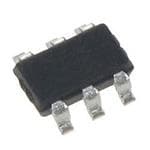
 Datasheet下载
Datasheet下载

